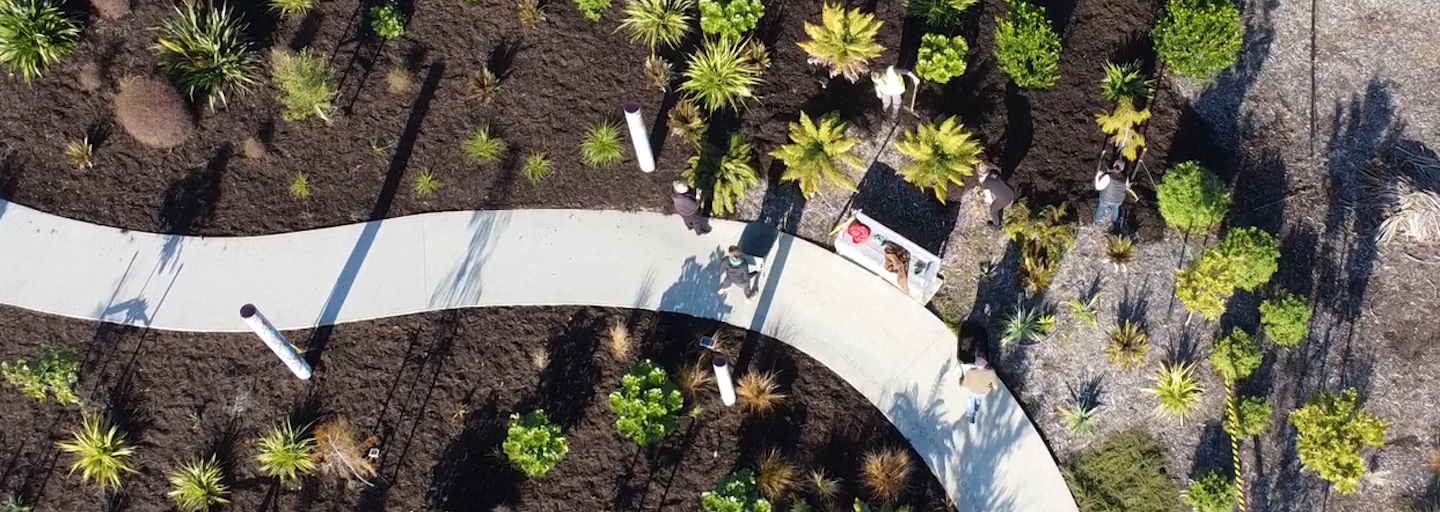Landscaping supplies & barks
We have over 40 years of experience in producing commercial landscaping solutions. We offer a range of consistent and quality landscaping supplies throughout the South Island.
View our product rangeNatural landscaping solutions
We offer a range of natural bark-based commercial landscaping supplies based on your needs from
- 01
Accredited products
For government projects
- 02
Visually aesthetic products
To suit commercial garden projects
- 03
Biofiltration
For odour control management from waste water
- 04
Bioretention
For developing a natural rain garden for stormwater management
- 05
Playground surfacing
Soft play for community playground projects
- 06
Or laying soils and compost
For community gardens to increase soil health
Repurposing natural wood residues for good
At Azwood, we give natural wood residues another purpose. Our generational knowledge and deep understanding of the entire repurposing process means we’re able to divert natural wood waste from landfills.
Our why: We believe in being resourceful and making the most of what we’ve been given. Positively impacting the environment and giving wood residues another purpose.
Why AzwoodAbout usPartner with Azwood
We partner with industries throughout New Zealand to supply a host of natural products all made from repurposed wood residues.
This includes wood fuel for schools, hospitals, and manufacturing plants, compost and potting mixes for New Zealand growers, wastewater management for local government, and commercial landscaping supplies for civil contractors and landscapers.
- Generational knowledge and trust for ongoing partnerships for commercial projects
- Consistent high-quality products supplied at commercial volumes
- Accredited supplier of certified playground barks for healthy soft play
- Council approved natural bark-based mixes for wastewater odour control and rain garden stormwater management
- Strong relationships with our partners - we’re here when you need us
 Convenient pickup locations and commercial delivery across the South Island
Convenient pickup locations and commercial delivery across the South Island
Certified & council-approved products
Many of our products are accredited and council-approved and have been developed over many years. They provide a sustainable, natural option to synthetic products.
A range of certified natural playground bark
Council-approved natural bioretention bark-based mix for rain garden stormwater management
Council-approved natural biofiltration bark-based mix for wastewater odour control
Looking to purchase at a smaller scale?
Find a retailer
We have minimum pickup and delivery requirements for our products, but supply retailers across the South Island with many of our products. Use the interactive map to find a retailer that stocks Azwood® products near you.
Find a retailerView our product rangeInformation for retailers
At Azwood, we work with garden centres and landscaping yards across the South Island. Offering a consistent supply of landscaping and bark products.
Are you a garden centre or landscape yard looking to stock Azwood® landscaping products?
Enquire about stocking Azwood® productsGet in touch today


 Apply for an account with AzwoodAre you a commercial operator looking to purchase in bulk?Submit an application
Apply for an account with AzwoodAre you a commercial operator looking to purchase in bulk?Submit an application






